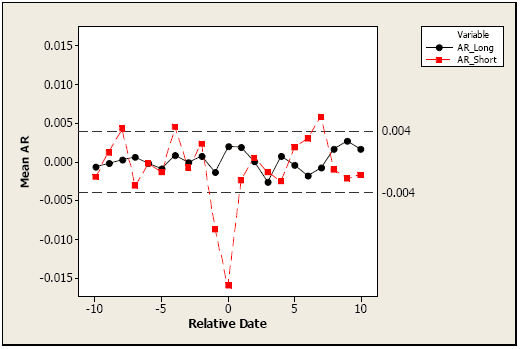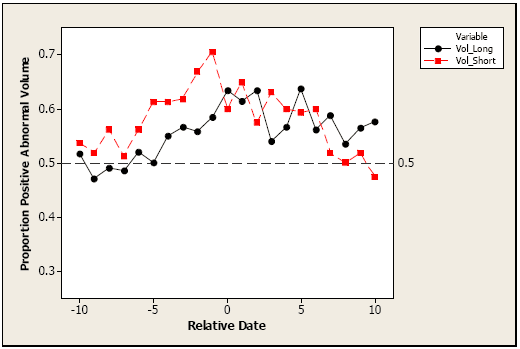What is the nature and value of stock recommendations made by bloggers? Do investors/traders act on them? In his recent paper entitled “The Impact of Blog Recommendations on Security Prices and Trading Volumes”, Veljko Fotak measures the performance and influence of blogger stock recommendations based on a sample of 340 buy and 160 sell recommendations from 122 distinct bloggers (with posted biographies) via Seeking Alpha during 2006. Using this sample, along with daily price and volume data for the recommended stocks, he concludes that:
- Bloggers range from students to hobbyists to financial professionals.
- About 58% of blog stock recommendations coincide with company news.
- Bloggers tend to recommend liquid large-capitalization stocks with recent abnormal returns and trading volumes.
- The long (short) recommendations of bloggers appear consistent with contrarian (momentum) strategies.
- Blog buy and sell recommendations on average exhibit some value, with considerable variation among blogs.
- Cumulative abnormal returns for long (short) recommendations over the 20 trading days following blog publication are positive and significant (negative but not significant).
- Recommended buys (sells) generate an average abnormal return of +0.4% (-1.8%) in the two trading days immediately following publication, with 54% (66%) of the two-day returns positive (negative).
- The recommendations of the best (worst) performing blog generate an average cumulative abnormal two-day return of +10% (-7.4%), based on eight (just two) recommendations.
- Blog readers appear to react more strongly to:
- Sell recommendations.
- Recommendations from bloggers with graduate degrees in finance or economics.
- Bloggers mostly echo information already available in the media, but market reactions suggest some uniqueness of information/analysis and/or distribution channel.
- The absence of price reversals in the twenty days following publication support the hypothesis that blogs offer genuine information.
The following chart, taken from the paper, maps mean abnormal returns (AR) from 10 trading days before (-10) to ten trading days after (+10) publication for all 340 buy (long) and 160 sell (short) recommendations in the sample. Day 0 is the first day that blog readers can trade recommendations. The dashed lines are about two standard deviations from zero. The chart shows that the immediate reaction tends to be much stronger for sell recommendations than buy recommendations. It suggests that a prior decline in price may attract the attention of bloggers making sell recommendations.

The next chart, also from the paper, maps the proportion of firms displaying positive abnormal volumes from 10 trading days before (-10) to ten trading days after (+10) publication for the entire sample. Results suggest that abnormal volume attracts the attention of bloggers and that sell recommendations may have more impact on subsequent trading activity than buy recommendations.

In summary, trading activity in stocks recommended by bloggers indicates that on average the recommendations (especially sells) have some real value and lasting market impact. Blogger credentials appear to matter.